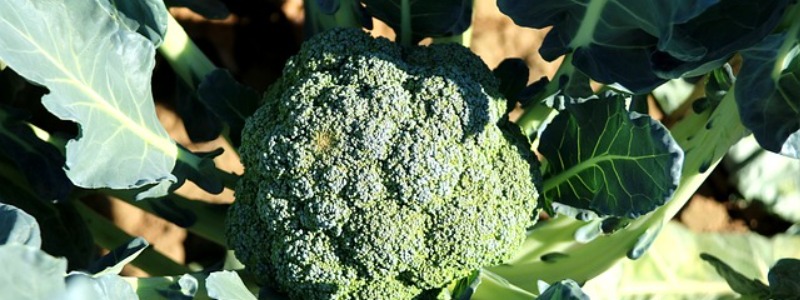Broccoli: How to Choose the Perfect Variety for Your Garden
Contents
- Broccoli: How to Choose the Perfect Variety for Your Garden
- Introduction to the broccoli crop
- Why choosing the perfect variety matters
- Understanding the different varieties of broccoli
- 14 Popular Types of Broccoli for Your Garden
- Key factors to consider when selecting a variety
- Tips for finding the best seed supplier
- Planting and caring for your broccoli plants
- Common problems and how to avoid them
- Harvesting your broccoli crop
- Delicious broccoli recipes to try at home.
Broccoli is an incredibly versatile and nutritious vegetable that can be enjoyed in a variety of ways. Growing it in your own garden is a great way to ensure that you always have access to fresh, healthy produce. However, with so many varieties of broccoli to choose from, it can be difficult to know which one is best suited for your garden. Factors such as climate, soil type, and growing season all play a role in choosing the right variety.
In this post, we will take a closer look at the different types of broccoli and provide tips on how to choose the perfect variety for your garden. We’ll explore the benefits of each type of broccoli and guide you through the process of selecting the right one to meet your needs. So, whether you are a seasoned gardener or just starting out, read on to learn how to select the perfect broccoli variety for your garden.
Introduction to the broccoli crop
Broccoli is a healthy and delicious vegetable that belongs to the cabbage family. It is packed with nutrients and antioxidants, making it a popular choice for health-conscious individuals. Broccoli is also a versatile crop that can be eaten raw, cooked, or used in a variety of dishes such as soups, stir-fries, and salads.
When it comes to growing broccoli, there are many different varieties to choose from, each with its unique characteristics and benefits. Some varieties are better suited for certain growing conditions, while others are more resistant to pests and diseases. To choose the perfect variety for your garden, it’s important to understand the different types of broccoli, their growing requirements, and their flavor profiles. With the right knowledge and preparation, you can grow a bountiful crop of delicious and nutritious broccoli right in your own backyard.
Why choosing the perfect variety matters
Choosing the perfect variety of broccoli for your garden can make all the difference in how successful your crop will be. Different varieties have different characteristics that can affect the growth, taste, and yield of your broccoli.
For example, some varieties are better suited for colder temperatures and can withstand frost, while others do well in warmer climates. Some varieties have a shorter growing season, while others take longer to mature. Additionally, different varieties can have varying levels of sweetness, bitterness, and tenderness.
Choosing the right variety is also important for disease resistance. Some varieties may be more resistant to certain diseases than others, which can save you time and money in the long run.
Understanding the different varieties of broccoli
Broccoli is one of the most popular vegetables grown in home gardens, but choosing the right variety can be overwhelming due to the numerous options available. Understanding the different varieties of broccoli is essential before deciding which one to plant in your garden.
One of the most common types of broccoli is the Calabrese variety, which is known for its large, green heads and its tolerance to cold weather. This variety is perfect for those living in cooler climates, as it can be grown throughout the year.
Another popular variety is the Romanesco broccoli, which features a unique appearance with its striking spiral pattern and pointed florets. It’s also known for its mild, nutty flavor and crunchy texture. This variety is ideal for those who want to add some visual interest to their garden and plate.
If you are looking for a broccoli variety that produces multiple smaller heads, then the sprouting broccoli is the way to go. This variety is known for its ability to produce florets even after the main head has been harvested. It is perfect for those who want a continuous harvest of small, tender heads.
Lastly, the purple broccoli variety, as the name suggests, has a purple color on the florets and stems. It’s packed with antioxidants and has a sweeter flavor than its green counterparts. This variety is perfect for those who want to add some color to their garden and plate.
14 Popular Types of Broccoli for Your Garden
When it comes to vegetable gardening, broccoli is a top choice for many gardeners. This cool-season crop is hearty and versatile and can be planted throughout the spring and fall months. But with so many types of broccoli available on the market, which ones are the best suited for your garden? Here are 10 popular varieties of broccoli that you should consider adding to your planting plans.
Calabrese broccoli
The most widely recognized type of broccoli, Calabrese is an open-pollinated variety that produces delicious, light green heads of crisp florets. It matures relatively quickly and does well in cooler temperatures. Popular varieties include ‘Greenbelt’, ‘Goliath’, and ‘Marathon’.
Romanesco broccoli
Romanesco is not as common as Calabrese but is an easy-to-grow variety that provides a distinct nutty flavor and striking lime green color. It’s resistant to bolting and produces tasty pointed heads. Popular varieties include ‘Romano’ and ‘Arcadia’.
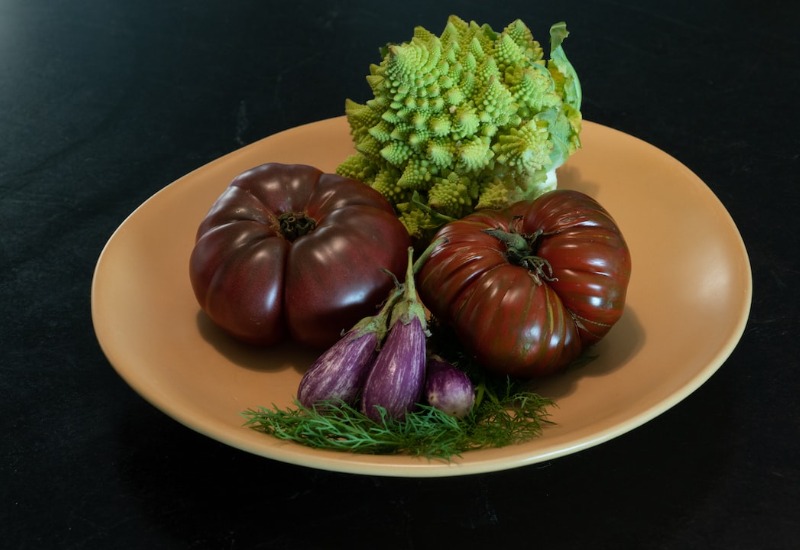
Sprouting broccoli
Sprouting broccoli produces small clusters of edible buds along long, slender stalks. This type of broccoli has a sweeter flavor than Calabrese and Romanesco varieties and may take longer to mature. Popular varieties include ‘DeCicco’, ‘Green Goliath’, and ‘DiCicco’.
Purple Sprouting Broccoli
As the name suggests, purple sprouting varieties produce colorful heads of buds ranging from deep purple to blue-green. This flavorful type of broccoli is slow-growing and can be harvested over several weeks if desired. Popular varieties include ‘Red Fire’ and ‘Early Purple Sprouting’.
This hardy broccoli variety is perfect for cool seasons because of its slow maturing rate. Although it only produces one main head, it is followed by numerous smaller side shoots that offer a unique and flavorful harvest. Purple Sprouting broccoli requires full sun exposure and moist soil for optimal growth.
Green Goliath
The Green Goliath broccoli offers huge heads that can weigh up to 2lbs each. This variety does best when planted early in the season as the heads need time to develop before the warm weather arrives. This type of broccoli tends to require more maintenance than other varieties as it is susceptible to disease and pests if not cared for properly.
Broccolini
Broccolini is a hybrid cross between Chinese kale and Calabrese broccoli. The resulting plant has tender stems with clusters of mini florets, making it perfect for roasting, steaming, or sautéing. Popular varieties include ‘Aspabroc’ and ‘Asparation’.
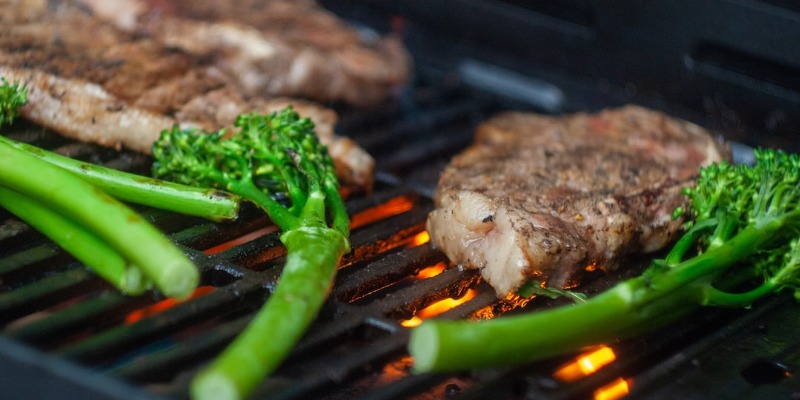
Belstar Broccoli
A favorite among experienced vegetable gardeners, Belstar broccoli offers a unique flavor profile and large heads. The heads of this variety can reach up to 8″ in diameter and should be harvested when the buds begin to open. This type of broccoli is resistant to bolting and holding which makes it a great option for long term planting.
Broccoflower Varieties
Broccoflower is another hybrid vegetable created by crossing Calabrese broccoli and cauliflower plants. This interesting vegetable has bright yellow-green heads of tiny florets that are ideal for salads or stir-fries. Popular varieties include ‘Harvest Green’ and ‘Orient Express’.
Chinese Broccoli
Chinese broccoli is an excellent addition to any garden as it is incredibly easy to grow. This type of broccoli needs minimal care and produces loads of edible leaves and stems that can be eaten raw or cooked. Chinese broccoli has a milder flavor than other varieties and will produce small purple flowers if allowed to flower.
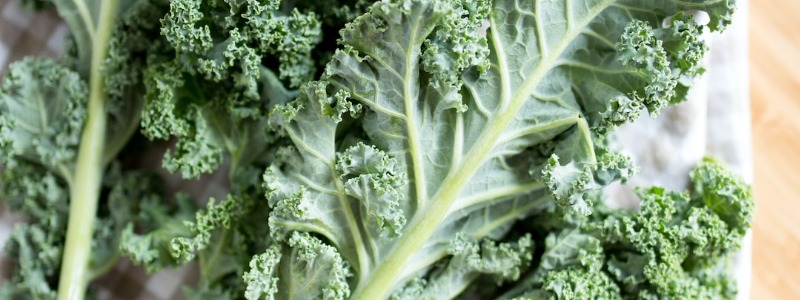
Gai-lan (or Chinese broccoli) has long stems with sparsely spaced flowering heads. It’s slightly bitter taste lends itself nicely to sauces or stir-fries. Popular varieties include ‘Chiao Tung Paak’ and ‘Chinese Kale’.
Waltham 29 Broccoli
Originally developed at the Waltham Research Institute in England, Waltham 29 broccoli is an early maturing variety that produces small, succulent heads that can reach up to 1 lb each. This broccoli prefers cooler temperatures but will tolerate some degree of heat. It should be harvested just after the buds open for best results.
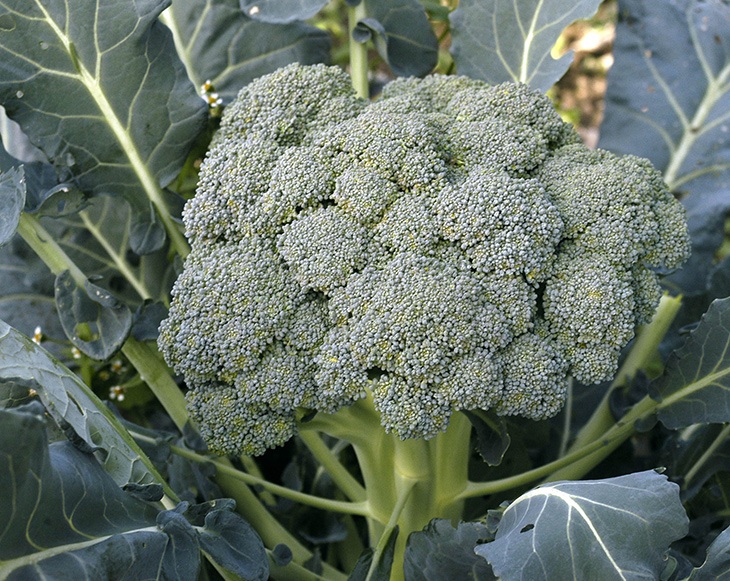
Gypsy Broccoli
Gypsy broccoli is a hybrid variety with deeply colored purple heads and thick stems. The plants tend to mature quickly, but the heads must be harvested while still tightly closed for best flavor. Gypsy broccoli is also known for its resistance to pests and diseases, making it a great choice for novice gardeners.
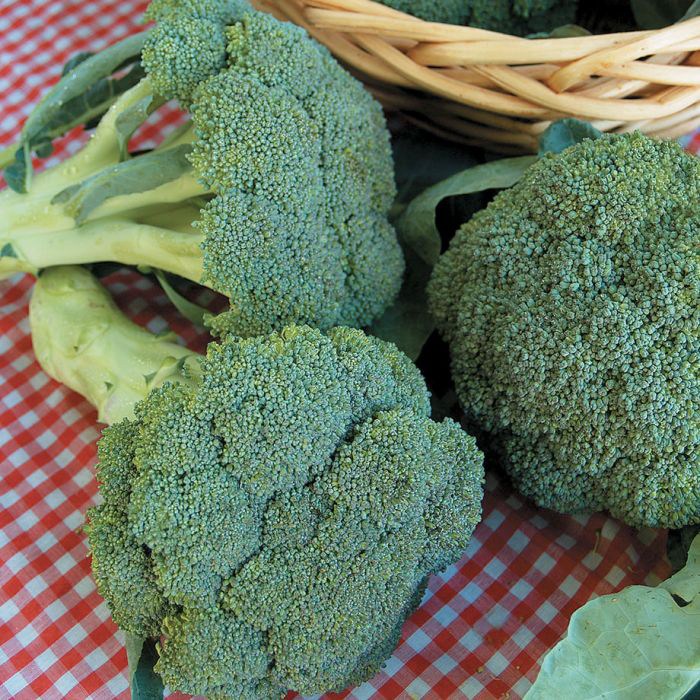
Fiesta Broccoli
Fiesta broccoli is both sweet and tangy, making it a favorite among home gardeners. Its vibrant orange-yellow color stands out in gardens and adds a fun, decorative touch to salads or dishes. Fiesta broccoli reaches maturity quickly and should be picked when the heads are tight for optimal taste.
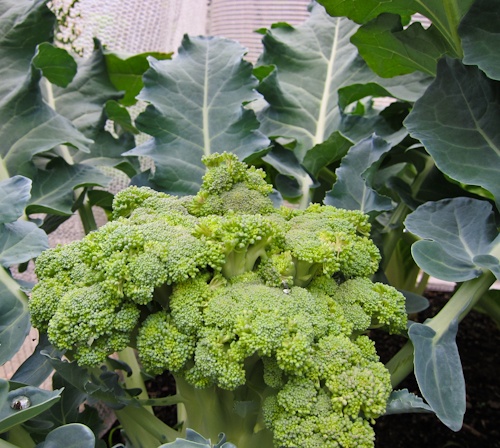
Sun King
Sun King broccoli forms large green heads with yellow centers that become sweeter as they age. This variety matures slowly so it should be started early indoors or under coverings before being transplanted outdoors when the weather warms up. Sun King requires regular watering for best results.
Destiny Broccoli
Destiny broccoli is an F1 hybrid variety with extremely high yields of large, heavily domed heads that take around 14 weeks to mature. The plants produce numerous side shoots for multiple harvests during the season and require full sun exposure and well-drained soil to reach their full potential.
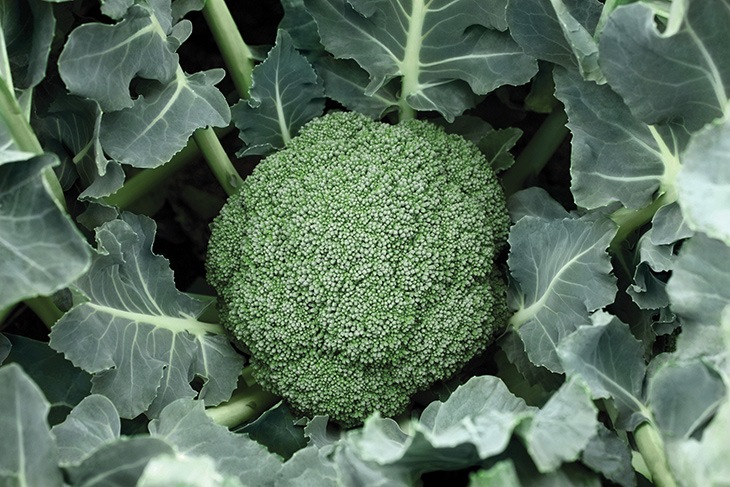
Key factors to consider when selecting a variety
When choosing the perfect broccoli variety for your garden, there are several key factors to consider. First, you should consider the climate in your area. Some broccoli varieties, such as Calabrese, are better suited for cooler climates and may not perform well in warmer regions.
Another important factor is the amount of space you have. If you have limited space, you may want to consider a bush variety that doesn’t require as much room to grow. However, if you have plenty of space, a standard variety may be a better option.
You should also consider the time it takes for the broccoli to mature. Some varieties, such as “Early Dividend,” mature in as little as 50 days, while others, such as “Purple Cape,” can take up to 100 days.
The size and shape of the head is another important consideration. Some varieties have large, tight heads while others have smaller, more loose heads. Your personal preference and intended use for the broccoli should guide your decision in this regard.
Finally, you should consider any disease resistance that the variety may have. Some varieties may be more resistant to common broccoli diseases, such as clubroot or black rot, which can help ensure a successful harvest. By considering these key factors, you can choose the perfect broccoli variety for your garden and enjoy a bountiful harvest.
Tips for finding the best seed supplier
When it comes to finding the best seed supplier for your broccoli, there are a few things to keep in mind. First and foremost, make sure you are working with a reputable supplier. Do your research and read reviews from other gardeners to ensure that the seeds you receive are high-quality and true to the variety you ordered.
It’s also a good idea to look for a supplier that specializes in vegetable seeds. While general gardening stores may carry broccoli seeds, a supplier that focuses solely on vegetable seeds will typically have a wider variety to choose from and be more knowledgeable about the different varieties available.
Consider the seed packaging as well. Look for suppliers that provide detailed information on the packaging, such as the expected germination rate and days to maturity. This will give you a better idea of what to expect from the seeds you purchase.
Planting and caring for your broccoli plants
Once you’ve chosen the perfect broccoli variety for your garden, it’s time to get planting! Broccoli is a cool-season crop, meaning it grows best in temperatures ranging from 45-75°F (7-24°C). It’s also important to make sure your broccoli plants have plenty of sunlight, ideally around 6 hours a day.
Before planting, it’s important to prepare the soil. Broccoli plants prefer rich, well-draining soil that is high in organic matter. You can amend your soil with compost or aged manure to help enrich it. You should also make sure the soil has a pH level of around 6.0-7.0.
When planting your broccoli, make sure to space the plants around 18-24 inches apart. This will allow the plants to grow to their full size without overcrowding. You can also consider planting companion plants such as spinach, lettuce, or beets, which can help deter pests and improve soil health.
Once your plants are in the ground, it’s important to keep them well-watered. Broccoli plants need around 1-1.5 inches of water per week, either from rainfall or irrigation. Mulching around the base of the plants can also help retain moisture in the soil.
It’s also important to keep an eye out for pests and diseases. Common pests that affect broccoli plants include aphids, cabbage loopers, and flea beetles. You can use natural methods such as hand-picking or applying neem oil to control pest populations. Diseases such as clubroot and black rot can also affect broccoli plants, so it’s important to keep the soil healthy and rotate your crops each year.
Common problems and how to avoid them
Whether you are a seasoned gardener or a beginner, growing broccoli can sometimes present challenges. Here are some common problems and how to avoid them:
- Pests: Broccoli can be attacked by pests such as aphids, cabbage worms, and flea beetles. To avoid them, try companion planting with herbs such as basil or marigold which can act as natural repellents. You can also use organic sprays or insecticidal soap to control infestations.
- Disease: Broccoli can be susceptible to fungal diseases such as clubroot and downy mildew. To prevent these diseases, make sure your soil is well-drained and avoid planting in the same spot for consecutive years. You can also use fungicides to control outbreaks.
- Bolting: Broccoli plants may bolt or go to seed prematurely if they are exposed to high temperatures or a lack of water. To avoid this, make sure your plants are well-watered and provide them with shade during hot weather.
- Nutrient deficiencies: Broccoli plants require nutrients such as nitrogen, phosphorus, and potassium to thrive. To avoid deficiencies, make sure your soil is well-fertilized before planting and use a balanced fertilizer throughout the growing season.
Harvesting your broccoli crop
Harvesting your broccoli crop can be an exciting and rewarding experience. Once the broccoli heads have formed and are a deep green color, it’s time to begin harvesting. The first step is to cut the main head off the plant, leaving a few inches of stem.
After the main head is removed, the plant will continue to produce smaller side shoots that can also be harvested. These side shoots will not be as large as the main head but are just as delicious.
When harvesting your broccoli, it’s important to do it at the right time. If you wait too long, the broccoli will begin to flower and the heads will become loose and unappetizing. On the other hand, if you harvest too early, the heads will be small and undeveloped.
To ensure that your broccoli continues to produce throughout the season, it’s important to keep the plant healthy and well-maintained. This means watering regularly, keeping the soil well-drained and fertilizing appropriately.
Delicious broccoli recipes to try at home.
After all the hard work of choosing the perfect variety of broccoli and growing it in your garden, it’s time to enjoy the fruits of your labor! Broccoli is a versatile vegetable that can be used in a variety of dishes, from salads to soups to stir-fries. Here are some delicious broccoli recipes to try at home.
Broccoli and Cheddar Soup
This warm and comforting soup is perfect for a chilly day. Simply sauté some onions and garlic, add in chopped broccoli and vegetable broth, and simmer until the broccoli is tender. Then blend it all together with some shredded cheddar cheese for a creamy, cheesy soup.
Broccoli Salad
This classic salad is perfect for a summer picnic or BBQ. Simply blanch some broccoli florets and mix them with chopped bacon, red onion, and a creamy dressing made from mayonnaise, vinegar, and sugar.
Broccoli and Beef Stir-Fry
This quick and easy dinner is perfect for busy weeknights. Simply stir-fry some sliced beef with broccoli florets, garlic, and ginger, then add in a sauce made from soy sauce, oyster sauce, and cornstarch. Serve over rice for a satisfying meal.
No matter how you choose to use your freshly-grown broccoli, these recipes are sure to impress. Enjoy the delicious and nutritious benefits of this versatile vegetable!
We hope you enjoyed our blog post on how to choose the perfect broccoli variety for your garden. It can be overwhelming when looking at all the different types available, but with our tips, we hope you now feel confident in making the right choice for your garden and taste preferences. We can’t wait to see the delicious and healthy meals you’ll be cooking with your homegrown broccoli. Happy gardening!

